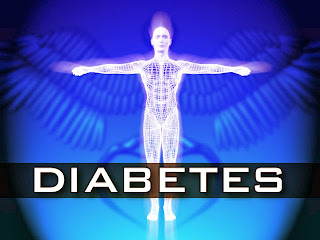|
|
Types of diabetes are:Type 1 diabetes
Type II diabetes
Gestational diabetes
Type 1 diabetes
Type 1 diabetes is an autoimmune disease (Autoimmune disease). Autoimmune immune diseases are diseases that occur when the body's immune system, which function is to fight infections and infections, against one of the parts of the body.
In diabetes, the immune system attacks the beta cells responsible for producing insulin (Insulin) pancreas, destroying them. As a result, the pancreas produces too little insulin, or it may not produce insulin at all. Therefore, the person with type 1 diabetes to have insulin daily, throughout his life.
Until now, scientists do not know what is the exact reason that makes the body's immune system attacks the beta cells, but they believe that the risk factors for the disease include: Autoimmune, genetics, environmental factors, in addition to the possible involvement of some types of viruses.
The patients with type 1 diabetes about 5-10 percent of people with diabetes in the United States. In most cases, type I diabetes development in children and young people, but it may appear at any age.
Usually, symptoms of diabetes type I, in a short period of time. Although the destruction of beta cells sometimes starts before symptoms appear several years. These symptoms include: extreme thirst, frequent urination, constant hunger, weight loss, blurred vision and extreme fatigue. If you are diagnosed with type 1 diabetes and its treatment, the patient is in a State of trance, can lead to death. This phenomenon is known as Diabetic Ketoacidosis (DKA-Diabeticketoacidosis).
Type II diabetes
Is type 2 diabetes, the most common types of diabetes is prevalent among people, it is between 90 and 95 percent of patients with diabetes. This type of diabetes usually aging, obesity, genetics and family history of medical illness, personal medical record (cases of gestational diabetes), physical inactivity, and ethnicity. Approximately 80% of type 2 diabetics overweight.
The patients with type 2 diabetes the pancreas to produce sufficient insulin, but the body-for reasons not understood-not be able to use insulin effectively and benefit from it. This condition is known as "insulin resistance". After several years, the decreased production of insulin, the patient becomes similar to a type 1 diabetic, glucose accumulates in the blood and the body cannot use its own energy source (glucose).
Beginning symptoms of type 2 diabetes with the emergence and gradual evolution. It does not appear suddenly, such as type 1 diabetes. These symptoms include: fatigue, nausea, frequent urination, thirst, weight loss, blurred vision, frequent infections and slowing healing from injuries and wounds. But some patients do not show any symptoms at all.
Gestational diabetes
Infected women with gestational diabetes during pregnancy. As in the case of type II diabetes, this type of diabetes is the most common types of diabetes among women of Afro-American origin, Indian-American, Latin American, as well as among women with family history which has seen injuries to diabetes. Women who had gestational diabetes, by between 20 to 50 percent of the risk of developing type 2 diabetes within 5 to 10 years.
People infected with diabetes?
Diabetes is not a contagious disease, can be transmitted from one person to another. But there are many factors that would increase the risk of diabetes.
Affects diabetes type 1 men and women the same.
As type II diabetes, the most common among the elderly, especially with excess weight.
Related Posts







